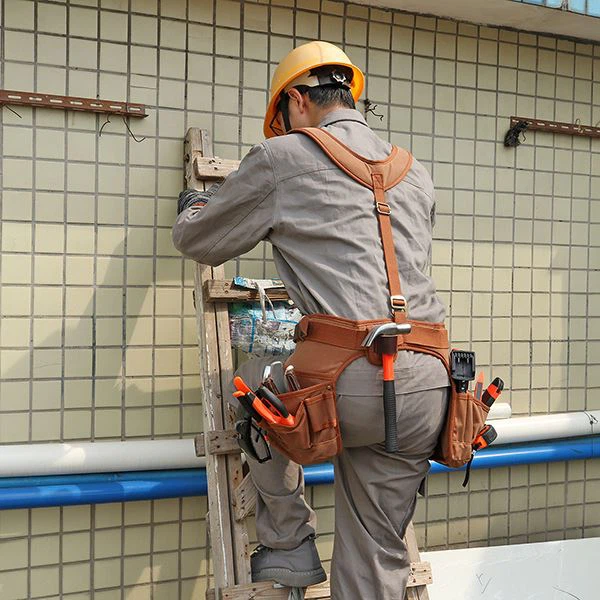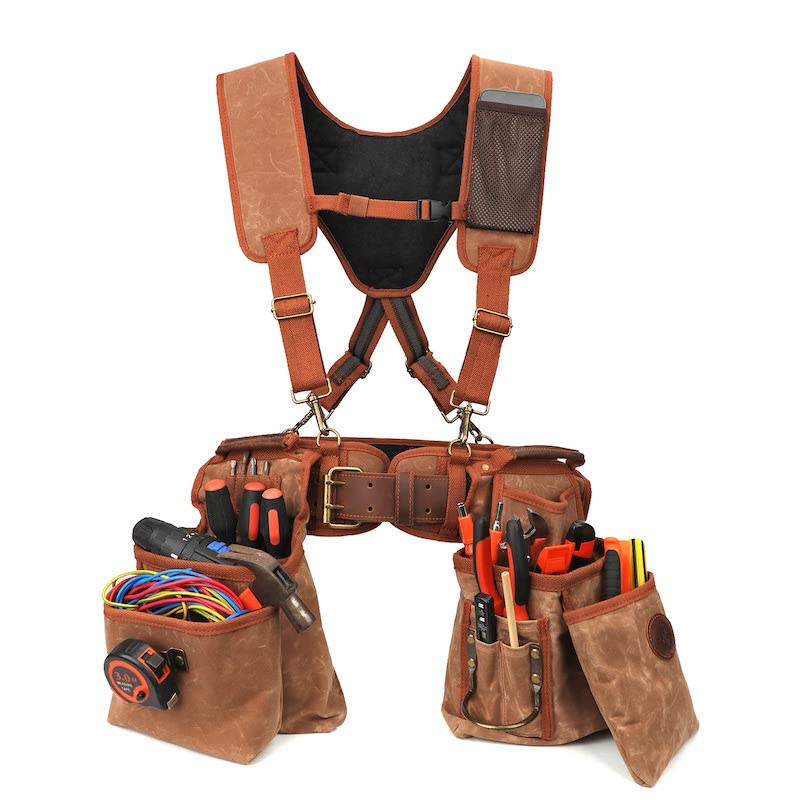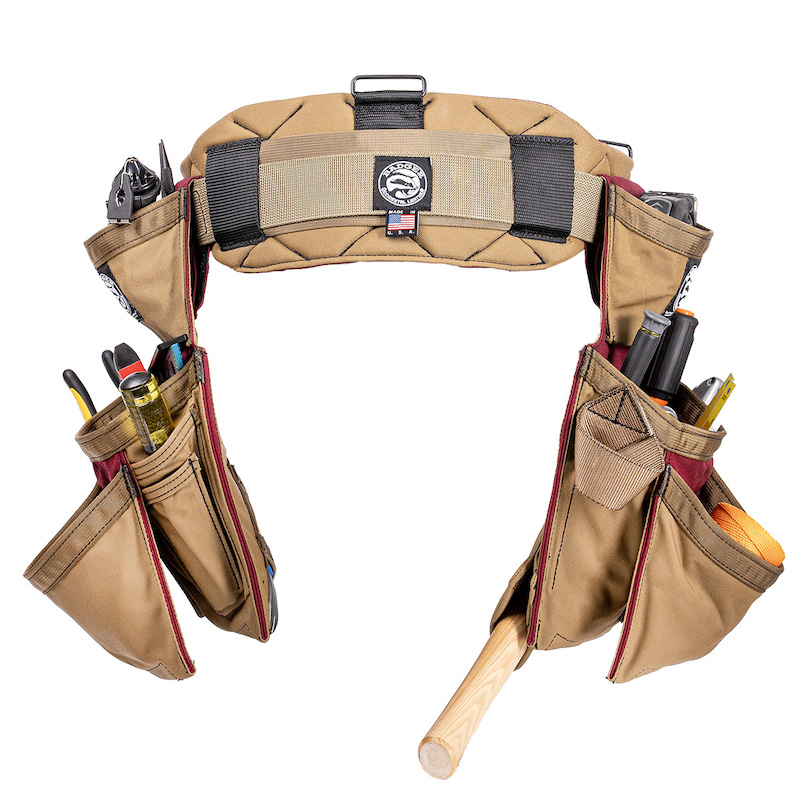Introduction
A carpenter tool belt serves as an indispensable accessory, providing convenience and efficiency for professionals and DIY enthusiasts alike. These versatile belts are designed to keep essential tools and supplies within reach, enhancing productivity and streamlining tasks. In this definitive guide, we will explore the features, benefits, and selection considerations for carpenter tool belts, shedding light on the paramount role they play in the construction and woodworking realms.
Part 1: Understanding the Importance of a Carpenter Tool Belt
A carpenter tool belt serves as a vital component of a professional’s toolkit, providing a platform for easy access to essential tools and supplies during a multitude of tasks.
Level 1: The tool belt promotes efficiency by eliminating the need for constant trips back and forth to a toolbox, allowing workers to keep their tools within arm’s reach at all times.
Level 2: By offering a hands-free solution for tool organization, the belt enables carpenters to focus on the task at hand, reducing unnecessary downtime and enhancing the overall workflow efficiency.
Part 2: Key Features and Components of Carpenter Tool Belts
Carpenter tool belts are designed with various features and components to accommodate different tool requirements and working preferences.
Level 1: Common components of tool belts include pouches, holders, loops, and pockets, offering designated spaces for hammers, screwdrivers, pliers, measuring tapes, and other frequently used tools.
Level 2: Some tool belts are equipped with built-in hammer holders, tape measure clips, drill bit holders, and utility knife pockets, providing additional organization and accessibility for specific tools commonly used by carpenters.
Part 3: Material and Durability Considerations
The durability and longevity of a tool belt largely depend on the quality of materials used in its construction, making material selection of utmost importance.
Level 1: Tool belts are often made from leather, nylon, or polyester, each offering its unique advantages in terms of strength, longevity, and resistance to wear and tear.
Level 2: Premium leather tool belts are sturdy and durable, with the ability to withstand heavy use, while nylon and polyester belts are lightweight and moisture-resistant, making them suitable for various job site conditions.
Part 4: Comfort and Fit for All-Day Wear
An essential aspect of a carpenter tool belt relates to its wearability and comfort, especially for tradespeople who spend extended hours on the job.
Level 1: Modern tool belt designs feature padded waistbands and adjustable straps to offer a comfortable fit for a wide range of body types, reducing fatigue and promoting prolonged wearability.
Level 2: Ergonomic features such as padded suspenders and breathable materials contribute to minimized strain on the body, making the tool belt an indispensable and ergonomic accessory for carpenters working on long shifts.
Part 5: Customization and Modular Tool Belt Systems
Modular tool belt systems offer carpenters the flexibility to customize their tool-carrying solutions, catering to individual tool preferences, job requirements, and personal comfort.
Level 1: Modular tool belts allow for the addition, removal, and reconfiguration of pouches, holders, and accessories, enabling users to adapt the belt to a specific task or working environment.
Level 2: The modularity of these systems facilitates the organization of tools based on workflow requirements, resulting in personalized solutions for different trades and job site demands, ensuring optimum efficiency and organization.
Part 6: Selecting the Right Carpenter Tool Belt for the Job
Factors such as trade specialization, task requirements, and personal preferences play a critical role in determining the most suitable tool belt for a carpenter.
Level 1: Considerations such as tool capacity, weight distribution, and organization convenience shape the selection process, ensuring that the chosen belt meets the specific needs of the user.
Level 2: It is crucial to research and compare various tool belt models, considering aspects such as pocket and pouch layouts, material durability, comfort features, and adjustability, to make an informed decision that aligns with the user’s unique job demands and working environment.
Part 7: Maintenance and Care for Carpenter Tool Belts
Proper maintenance and care are vital for ensuring the longevity and functionality of a carpenter tool belt, safeguarding its performance and durability in demanding work environments.
Level 1: Regular cleaning and maintenance, including the removal of debris and dirt, as well as the occasional conditioning of leather belts, help preserve the integrity of the materials and components, extending the lifespan of the tool belt.
Level 2: Additionally, inspecting the belt for wear, checking stitching and seams, and repairing or replacing worn-out components as needed can prevent premature degradation and maintain the belt’s structural integrity, supporting its long-term usability on the job site.
Part 8: Specialized Tool Belts for Unique Carpentry Needs
Specialized tool belt designs cater to unique carpentry tasks and trade requirements, offering tailored tool organization solutions for specialized applications and working environments.
Level 1: Task-specific tool belts are available for various trade disciplines, such as framing, finish carpentry, electrical work, and woodworking, providing optimized tool layouts and features tailored to the demands of each trade.
Level 2: These specialized tool belts may include features like tool-specific pockets, magnetic components, and reinforced holders, providing the necessary organization and accessibility required for the tools and supplies essential to each specific trade.
Part 9: The Evolution and Future of Tool Belt Design
As technology and user needs evolve, tool belt designs continue to advance, incorporating innovative materials, ergonomic features, and technology-driven enhancements to meet the evolving demands of modern trade professionals.
Level 1: Advancements in material science and fabrication techniques contribute to the development of lighter, more durable, and weather-resistant tool belt materials, enhancing performance and user comfort on the job site.
Level 2: The integration of technology-driven features, such as RFID tracking, modular tool holders, and personal safety devices, represents a potential direction for future tool belt designs, aiming to improve tool management, task efficiency, and worker safety in dynamic job site environments.
Part 10: Evaluating User Feedback and Reviews
User feedback and reviews offer valuable insights into the practicality, durability, and performance of different tool belt models, providing firsthand accounts of their suitability for various tasks and job site conditions.
Level 1: Prioritizing user feedback enables carpenters to gain an understanding of real-world experiences and potential considerations in selecting a tool belt that aligns with their specific needs and expectations.
Level 2: By weighing user testimonials and recommendations, individuals can make informed decisions that address their unique workflow requirements, helping ensure the chosen tool belt meets their expectations for functionality, comfort, and durability.
Conclusion
A carpenter tool belt serves as an essential accessory, offering convenience, efficiency, and organization for professionals and enthusiasts in the construction and woodworking industries. By understanding the key features, material considerations, wearability, customization options, and trade-specific requirements, individuals can select a tool belt that aligns with their unique needs, promoting enhanced work efficiency, comfort, and task performance in their daily operations. As an indispensable and practical tool-carrying solution, the carpenter tool belt continues to play a pivotal role in empowering tradespeople with the organizational advantage and accessibility needed for optimal task execution.
In conclusion, carpenter tool belts offer a critical platform for organization, efficiency, and convenience in the construction and woodworking trades. By considering key factors such as material durability, wearability, customization options, trade-specific requirements, maintenance needs, and specialized tool belt designs, carpenters can make informed decisions and select a tool belt that aligns with their unique needs, promoting enhanced work efficiency, comfort, and task performance. As an indispensable and practical tool-carrying solution, the carpenter tool belt continues to play a pivotal role in empowering tradespeople with the organizational advantage, accessibility, and task-specific functionality needed for optimal task execution.



